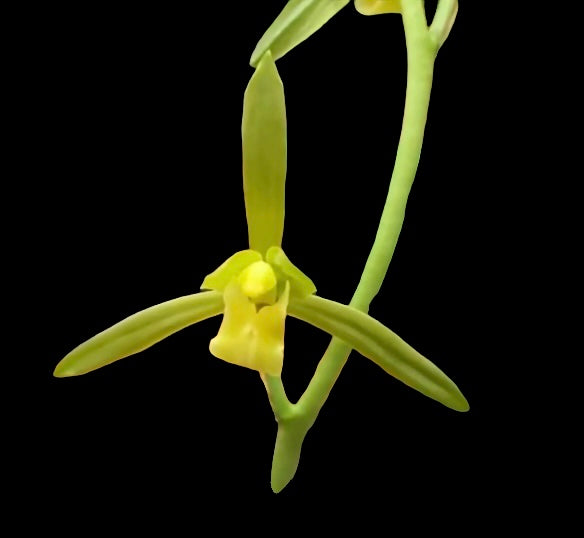
Mature plants in 4x6” cymbidium pots.
Actual plants pictured
Asian Cymbidiums (Chinese Cymbidiums) include three species native to China, Japan, Vietnam, Korea, and other nearby Asian countries: Cymbidium sinense, Cymbidium goeringii, and Cymbidium ensifolium. All three are considered miniatures among Cymbidiums and are often collected as much for the foliage as for the flowers. Most are notable for their beautiful variegation. Depending on the species, flowers occur sometime between spring and fall and are wonderfully fragrant. For a lovely video that includes growing tips, please check this out from Attainable Green on YouTube.
Asian Cymbidiums are temperate plants, so grow warm to cold--some can tolerate temperatures below freezing, but you don't need to be so mean. Beware the myth that these are strictly cool growers; that is patently untrue. They can take major heat and love it! As it cools off in fall, cut back slightly on water and completely cut off fertilizer until spring. The president of the Japanese Cymbidium Society told me personally that they only fertilize for three months a year, but you should feel free to fertilize more liberally. Keep plants in moderate to low light and never direct sun.
Plant Chinese Cymbidiums in deep pots. Cymbidium pots are taller than most pots to accommodate the long fat roots these guys produce. Although Asian Cymbidiums like to be frequently watered, they do not want to have soggy feet, so use a well drained medium such as medium grade bark mixed with something inert. The Japanese use only stone! If you go with something completely inert like rock, top the pot with a collar of moss to increase humidity around the roots.
Returns Policy
Due to the delicate nature of our orchids, all of our products may not be returned. If you're unhappy with your purchase, please contact orders@orchidclassics2u.com with your order number and reason for dissatisfaction with your order. We will do our very best to ensure you're happy with your Orchid Classics shopping experience.
Shipping
We can ship to virtually any address in the world. Note that there are restrictions on some products, and some products cannot be shipped to international destinations.
When you place an order, we will estimate shipping and delivery dates for you based on the availability of your items and the shipping options you choose. Depending on the shipping provider you choose, shipping date estimates may appear on the shipping quotes page.






